Xuan Yao
Test-time Adaptive Vision-and-Language Navigation
Nov 22, 2023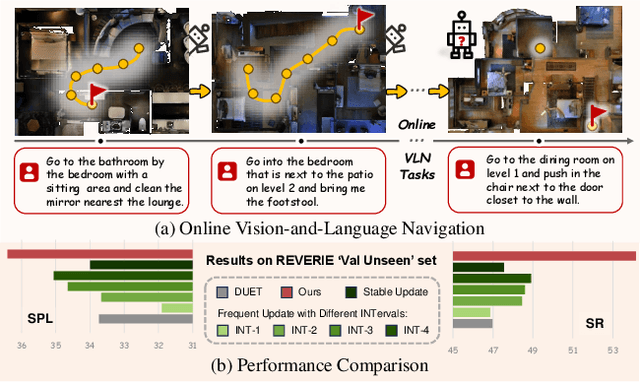
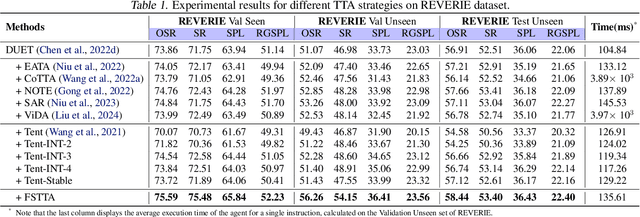

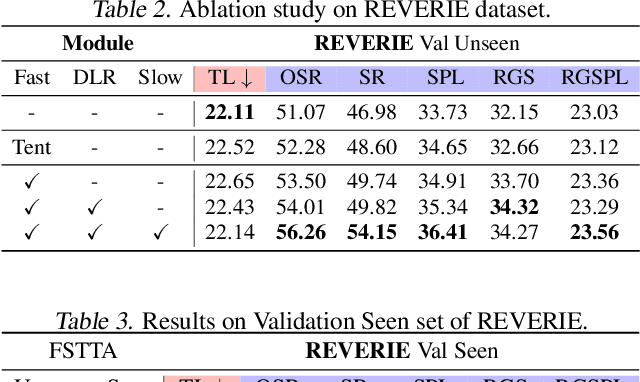
Abstract:Vision-and-Language Navigation (VLN) has witnessed significant advancements in recent years, largely attributed to meticulously curated datasets and proficiently trained models. Nevertheless, when tested in diverse environments, the trained models inevitably encounter significant shifts in data distribution, highlighting that relying solely on pre-trained and fixed navigation models is insufficient. To enhance models' generalization ability, test-time adaptation (TTA) demonstrates significant potential in the computer vision field by leveraging unlabeled test samples for model updates. However, simply applying existing TTA methods to the VLN task cannot well handle the adaptability-stability dilemma of VLN models, i.e., frequent updates can result in drastic changes in model parameters, while occasional updates can make the models ill-equipped to handle dynamically changing environments. Therefore, we propose a Fast-Slow Test-Time Adaptation (FSTTA) approach for VLN by performing decomposition-accumulation analysis for both gradients and parameters in a unified framework. Specifically, in the fast update phase, gradients generated during the recent multi-step navigation process are decomposed into components with varying levels of consistency. Then, these components are adaptively accumulated to pinpoint a concordant direction for fast model adaptation. In the slow update phase, historically recorded parameters are gathered, and a similar decomposition-accumulation analysis is conducted to revert the model to a stable state. Extensive experiments show that our method obtains impressive performance gains on four popular benchmarks.
Medical Matting: A New Perspective on Medical Segmentation with Uncertainty
Jul 08, 2021
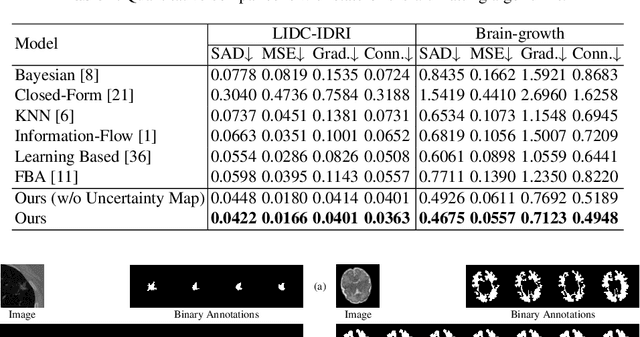

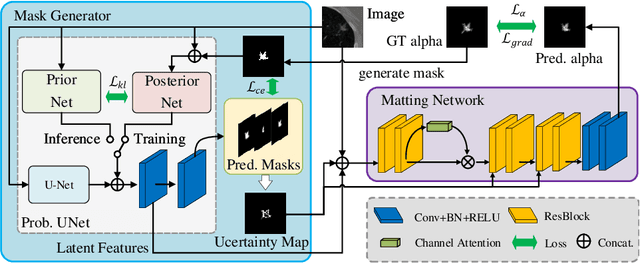
Abstract:In medical image segmentation, it is difficult to mark ambiguous areas accurately with binary masks, especially when dealing with small lesions. Therefore, it is a challenge for radiologists to reach a consensus by using binary masks under the condition of multiple annotations. However, these areas may contain anatomical structures that are conducive to diagnosis. Uncertainty is introduced to study these situations. Nevertheless, the uncertainty is usually measured by the variances between predictions in a multiple trial way. It is not intuitive, and there is no exact correspondence in the image. Inspired by image matting, we introduce matting as a soft segmentation method and a new perspective to deal with and represent uncertain regions into medical scenes, namely medical matting. More specifically, because there is no available medical matting dataset, we first labeled two medical datasets with alpha matte. Secondly, the matting method applied to the natural image is not suitable for the medical scene, so we propose a new architecture to generate binary masks and alpha matte in a row. Thirdly, the uncertainty map is introduced to highlight the ambiguous regions from the binary results and improve the matting performance. Evaluated on these datasets, the proposed model outperformed state-of-the-art matting algorithms by a large margin, and alpha matte is proved to be a more efficient labeling form than a binary mask.
 Add to Chrome
Add to Chrome Add to Firefox
Add to Firefox Add to Edge
Add to Edge